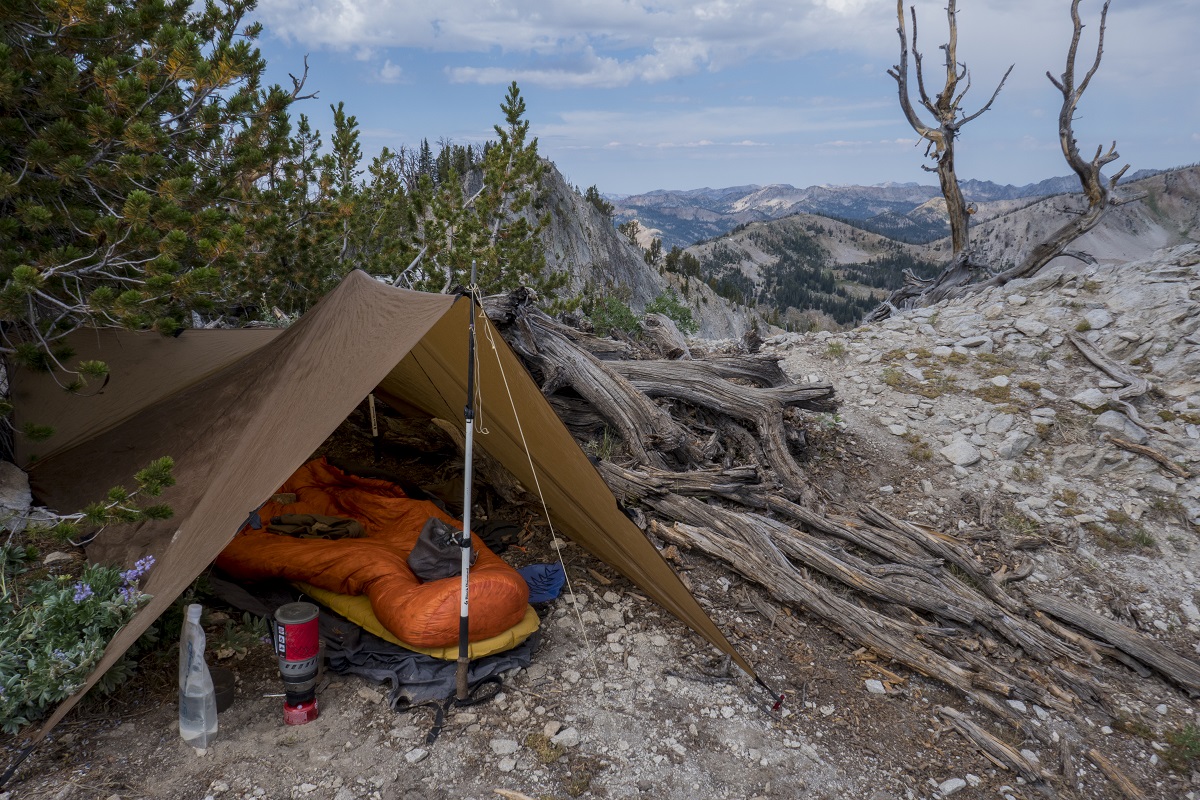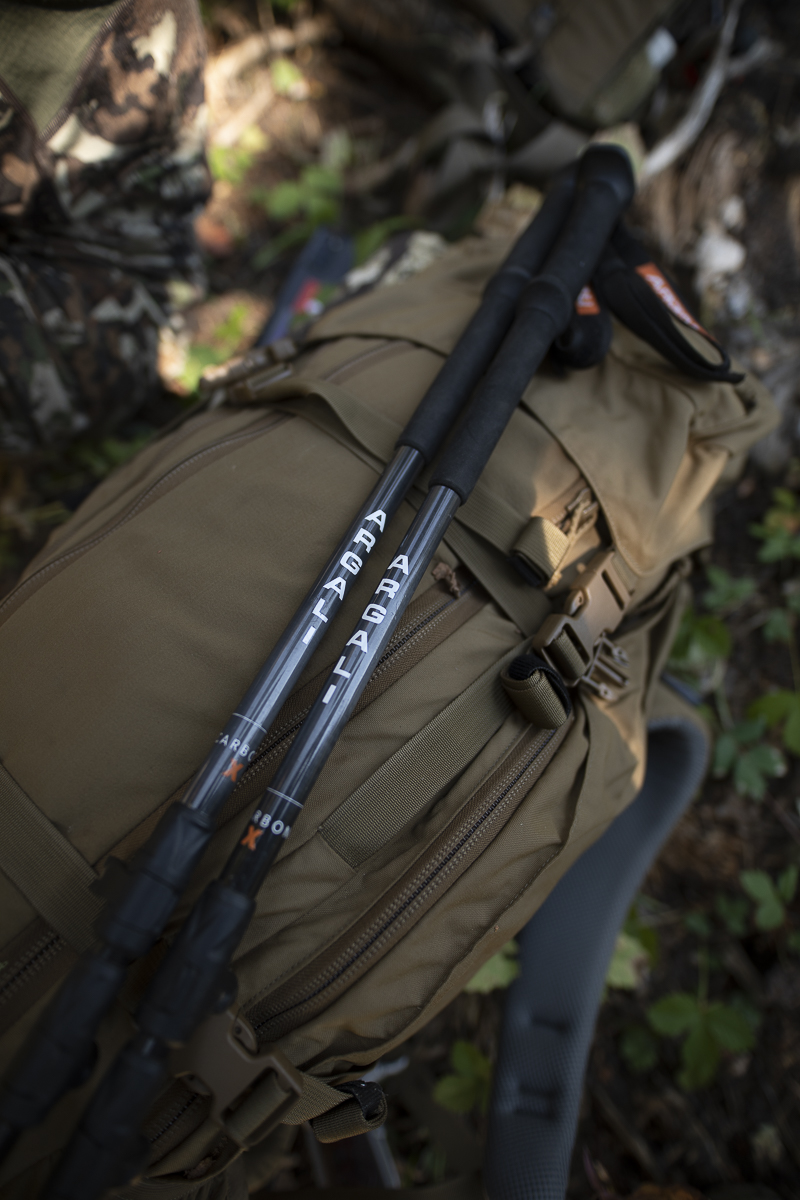
Trekking Poles for Backcountry Hunting
Trekking Poles for Backcountry Hunting By Brad Brooks
There are still a few laggards out there who are still not sold on the benefits of trekking poles for hunting. But the majority of backpack hunters know that the benefits of trekking poles outweigh the perceived downsides. The difficulty for those that use trekking poles is figuring out which of the many brands and models of trekking poles are best suited to meet the needs of the backcountry hunter. And of course, how much money to spend to get the right pair of trekking poles.
Trekking poles are an important piece of my backcountry kit. I use them to pitch my tent, glass off of occasionally, and most importantly help me get up and down the mountains. In this article, I cover different types of trekking poles, what sets quality poles apart from mediocre trekking poles, and some of the features that can help you pick out the best trekking poles for backcountry hunting.
*Note: I intentionally stay away from listing off brands and models (except for my current favorites near the end), and instead focus on the qualities that make for a good trekking pole. If you have a favorite model, be sure to leave a comment at the end and let me know what you like about it.

Trekking Poles - Collapsible Fixed Length vs. Telescoping
There are a few different types of trekking poles, but for lightweight hunters, there are two primary models:
- Collapsible fixed length trekking poles were originally designed for light hikers and ultra runners that wanted a super light trekking pole. These poles are often a fixed length pole that folds up into several pieces, held together by a rubber composite material that runs inside the pole. These poles are some of the lightest on the market and deserve a look. These trekking poles look like toothpicks, but they can work well for packing heavy loads around the mountains.
- Telescoping Trekking poles are the old standby models. They usually come in 2 or 3 pieces, with 3 piece poles being more pack-able and easier to attach to the outside of your backpack.

The vast majority of the time a trekking pole will be used at a consistent length. That length is typically the distance between the ground and your hand when your arm is bent at a 90 degree angle with your elbow against your body. However, there are occasions when a longer pole is helpful, such as going down a steep mountain, where having a telescoping pole is useful. Both models can work well, and what will work best for an individual depends on preference.
Bottom Line: Collapsible poles aren't as sturdy as telescoping trekking poles, but they're sturdy enough for hunting. Either model will work, and it comes down to preference, and whether you want a fully adjustable trekking pole.
Trekking Poles - Carbon vs. Aluminum Material
Most trekking poles on the market are made out of carbon fiber or aluminum. As a general rule, carbon fiber is going to be more expensive but lighter. Aluminum is going to be cheaper, and heavier. An aluminum trekking pole is also going to have more "give" to it when bending due to the properties of aluminum. A carbon fiber pole won't bend as much under stress, and is unlikely to give any warning before snapping.
Aluminum Trekking Poles
Not all aluminum is created equally. The less expensive aluminum trekking poles are often made out of an inferior and substantially weaker aluminum alloy, such as 6061 aluminum, which is used frequently in trekking poles. This aluminum is much more likely to bend and fail under load, but it is cheap and widely available.
Aluminum 7075 is a much higher quality aluminum alloy and is what most top-end aluminum trekking poles are made out of. It is significantly stronger, more durable and less prone to breaking and bending (7075 aluminum is used for rock climbing equipment, as an example). 7075 aluminum is also more expensive and accounts for the dramatic difference in price for aluminum trekking poles at the bottom and top end.
Bottom Line: Aluminum can be a great product for trekking poles, but make sure you buy a quality aluminum alloy.
Carbon Fiber Trekking Poles
Carbon Fiber poles are the material of choice for ounce-counting hunters. In addition to the weight savings, carbon fiber will absorb shock better than aluminum, giving the trekking poles a leg up on comfort as well. The downside of carbon fiber trekking poles occurs if you cut any of the strands of carbon fiber, which will significantly weaken the pole. This is not a common occurrence with trekking poles, but it can happen.
Like aluminum, not all carbon fiber is created equal either. Trekking pole legs made out of carbon fiber are usually made in two different ways: "pultrusion" or "roll wrapped" carbon fiber.
- Pultrusion manufactured carbon fiber creates a carbon fiber product where all the strands run parallel to each other. This creates a very stiff and strong pole designed to withstand force in one direction. The singular direction of the fibers also makes pultrusion carbon fiber susceptible to breaking with any type of torsional (twisting) force. And in the real world, torsional force happens frequently. Additionally, if your pole gets dinged or a deep cut to one of the carbon strands, the entire strength, and integrity of the pole can become compromised.
- Roll wrapped carbon fiber utilizes strands of carbon fiber laid on top of each other at different angles. Those strands are then rolled around a mandrel and heated to give it its shape. Roll wrapped carbon fiber with strands running at different angles is going to provide for directional and torsional strength. Because it has fibers running at different angles, roll-wrapped carbon fiber poles are going to be more durable if they get dinged, and they are going to have a greater strength from torsional force.
How do you know if your carbon fiber trekking pole is roll wrapped? The only way to really know is to call the manufacturer and ask them. Higher end brands will use a roll wrapped carbon fiber material, and most low-cost carbon poles will use a pultrusion made carbon fiber.
Bottom line: Roll wrapped carbon fiber is ideal for trekking poles. If you buy a carbon fiber pole from a reputable brand, you'll know it is well designed and engineered. If you buy a random off-brand, you're rolling the dice on quality.
Handles and Grips

The handle is something I had not put much thought into until I used different materials. Different materials have their advantages, but the comfort of a handle is important. Just like how a pair of boots can feel great in the store but miserable after a few trail miles, a good handle on a trekking pole can become uncomfortable after several miles.
The comfort of the handle is more important than one might realize. A handle will be made from the following materials:
- Cork is a premium quality material and what most people will find to be a comfortable option. Over time Cork will mold to the shape of your hand like a good pair of leather boots, creating a custom fitting grip. Cork is also naturally moisture wicking, so your hand isn't going to get as sweaty and wet, causing less abrasion between your hand and the grip which can cause discomfort.
- EVA Foam is another quality grip material. That does not mean it is an inferior product, and many people prefer the feel of a foam grip over cork. A quality foam grip will also form to your hand over time and it provides all day comort for your hands. Foam vs. cork is strictly a preference issue and foam handles shouldn't necessarily be looked at as inferior.
- Fake Cork is exactly what it sounds like. Companies will use an injection molded plastic but give it a facade of cork. Unless it says 100% cork, it likely isn't. Not a great option if you can afford a better quality handle.
- Rubber handles are found in some trekking poles, particularly on the lower end. Rubber works, but it isn't as comfortable as foam or cork on the hand.
Bottom line: Go with cork or foam for a handle and avoid fake cork and rubber if you can afford it.
Straps
The strap is a simple part of the pole that is often overlooked. The strap is designed to allow the user to use less force when gripping the handle. To properly use the strap, you should bring your hand up through the bottom of it and grip the handle. This creates a cradle for your wrist and allows you to not have to grip the handle.
Higher end trekking poles are likely to have a more ergonomic strap with a little padding for added comfort.
Bottom line: A slightly wider adjustable strap with a comfortable, ergonomic shape is a big plus, but not a deal breaker.
Final Thoughts
I was on a climbing trip with some friends a few years ago and we were crossing a steep snowfield with heavy packs. I watched my friend Matt take an unexpected sleigh ride 200 feet down the mountain on his back after his trekking pole broke when he put his weight on it. The only thing that kept him from gaining warp speed and careening another 1000 feet to the bottom was a rock outcropping.
Usually, a trekking pole isn't going to cost you your life, but the lesson is you get what you pay for. Matt had a cheap trekking pole, and he paid the price (he had some bruises, but was okay).
My favorite trekking pole over the past few seasons has been our Carbon X Trekking Pole. It's light, packable, has a comfortable grip and strap, and it is burly for a carbon fiber trekking pole.
If you have any other trekking pole models you like, or tips to share, leave them in the comments below. And if you have any horror stories about trekking pole mishaps, I really want to hear those stories.